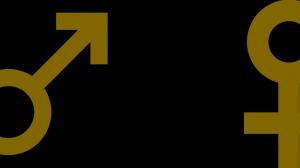As a club at IUP, Women’s and Gender Studies holds a table semesterly where we debunk Feminist Myths. We try to keep it light-hearted and give people a place to ask questions about things that they might not necessarily know about.
We offer a true and false game to let participants guess whether or not specific things are upheld beliefs in the Feminist Community. The trick of the game is to let participants find out more about Feminism so that it doesn’t seem like such a scary concept like most people who are against feminism make it out to be. So, here are a couple of Feminist Myths and why they are, in fact, myths and not true.
First, the Wage Gap was eradicated by the Equal Pay Act of 1963 and women and men are now paid the same.
The wage gap is not merely just about getting paid the same amount for minimum wage jobs. It is about job opportunities and starting salaries offered to people. The wage gap is a bias against working mothers and women of color. Out of 50 states, 7, yes SEVEN, are considered states with “STRONG EQUAL PAY PROTECTIONS.”
Yes, 49 states do include Discrimination Provision; requiring that men and women in the same workplace be given equal pay for equal work. This is enforced when taken to court. Most times, unfortunately, this isn’t taken to court, because people don’t realize that they’re being paid less than their male counterparts.
The State of Alabama actually has ZERO equal pay protections in place and 17 other states have severely weak protections. There are several occupations where women are earning significantly less than they would with equal pay. For example, female physicians and surgeons are typically paid $19 billion less annually.
Second, Feminists hate all men.
Feminists do not hate men.
A relevant issue; however, is Hegemonic Masculinity. Hegemonic Masculinity can be defined as “behaviors and language associated with the idealized male group that is seen as having the most power and status in society.” America is a Patriarchal culture. This means that we run under the rules, laws, and traditions of men. Yes, this was the way that the world was when the United States was formed.
Yes, we do have founding fathers, but we also lit rooms using candles when that happened. Many many things have become updated since 1776, for example, slavery has been abolished, women gained the right to vote, we have gone to space. Still, the percentage of women in Congress is at 23%. I am extremely grateful that the state of women in the US is better than before, but there are many things that you, as a straight, white man will never understand. Feminists want equality and equity, not dominance and hegemony.
Last, you can’t be a feminist if you’re a man.
You never need to be a certain gender or fit into a box to be an Ally (read more about how to be an Ally here). You also don’t have to say she’s someone’s mom or sister, or cousin, etc. to need to sympathize with survivors of sexual assault. Recognize that women make up half of this world, yet they are constantly being discounted because a biological factor that is out of our control.
Feminism is about equality for all marginalized groups. As a feminist, you can fight for LGBTQ+ groups, P. O. C, the class system, just remember that it affects women and see how you can make small changes in your life to recognize that.
Education is always the easiest and best way to get involved, do not be afraid to ask questions if you don’t know something.
Helpful Links:

